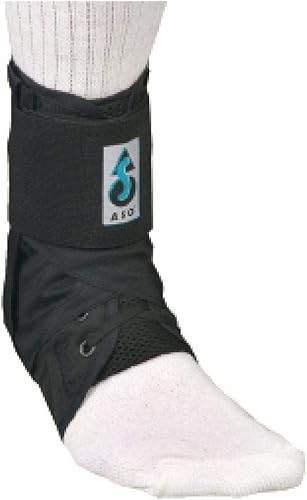Ankle inflammation treatment
If the ankle pain that appears is not very severe Patients may treat ankle pain by themselves using the following methods.
- Rest the ankle, rest the ankle for 2-3 days and avoid putting weight on the ankle. Which may use crutches or walking sticks to reduce weight on the ankle
- Cold compress after first injury Cold compresses may be placed on the ankles of the affected ankle for 20 minutes at a time and leave for an hour and a half before applying another cold compress, which may be done 3-5 times / day to reduce injuries, pain and swelling.
- Support the ankle By using an elastic bandage around the ankle to hold the ankle so that it doesn't move too much But do not wrap too tight It may cause numbness in your feet and toes to turn dark.
- Raise your ankle high. When having to sit or lie down To raise your feet high above the heart Which may use 2 pillows to support under the ankle
- Using medication, may take over-the-counter pain relievers, such as paracetamol. Or ibuprofen drugs, etc.
- Exercise if the symptoms start to improve May use your hands to manage the ankle in different directions to make the ankle move more. And reduce the risk of returning ankle pain again Which should always consult a doctor or specialist about safety And if symptoms appear during pain exercises Should stop immediately
However, if ankle pain is caused by arthritis Patients will not be able to treat ankle pain on their own. In which the doctor or specialist will recommend suitable treatment methods In order to not make the ankle pain worse Which may take quite a long time to heal May be a long time, weeks or months And though various symptoms began to improve until nearing full recovery But injuries may prevent the ankle from returning to normal strength Therefore should not use the ankle or put too much weight on the ankle
Causes of ankle pain
Ankle pain can occur for many reasons. Including injuries to the ankle bones Injury to the ankle tendon Or from various arthritic conditions
The examples of causes of ankle pain are as follows
- Tendon inflammation, swelling, tearing or tearing from various causes such as ankle turn over Or the ankle is twisted and deformed
- Achilles tendon inflammation
- The ankle, heel and nerves around the ankle have been injured.
- Infection in the ankle bone
- Ankle bone or foot bone fracture
- Gout or artificial gout
- Osteoarthritis and Rheumatoid Arthritis
Diagnosis of Ankle Pain
The doctor may diagnose ankle pain by asking the patient's history and information such as
- The nature of the symptoms And the time when symptoms appear
- The occurrence of wounds or other injuries around the ankle.
- Use ankle
- Congenital disease that may be associated with ankle pain
In addition, the doctor will examine the ankle area to find other abnormalities such as warmth, redness, swelling, sore presses, or loose joints, etc. The doctor may choose to use only one test method. Or may use many methods of diagnosis together Which varies according to the case and doctor's discretion If the doctor suspects that the ankle is broken The doctor may continue to diagnose using other methods, such as ankle x-rays, etc.
Ankle pain prevention
Because some types of ankle pain, such as ankle pain from rheumatoid arthritis, may be difficult to prevent. But ankle pain from general causes can be prevented By taking care of oneself in the following areas:
- Maintain weight at an appropriate level Because being overweight may result in too much pressure on the ankle
- Preparing the body before exercise By stretching the muscles and tendons in the ankle Or wear ankle support devices and tape the ankle support tape
- Avoid playing sports or activities that may be harmful to the ankle. Especially activities that require the ankle to be too hard Or likely to cause ankle injury
- Avoid wearing high heels. And choose shoes that are the right size for the feet
- If the ankle is turned over during an activity, hold the ankle using a device such as an elastic bandage or an ankle support.
Med Spec ASO Ankle Stabilizer

